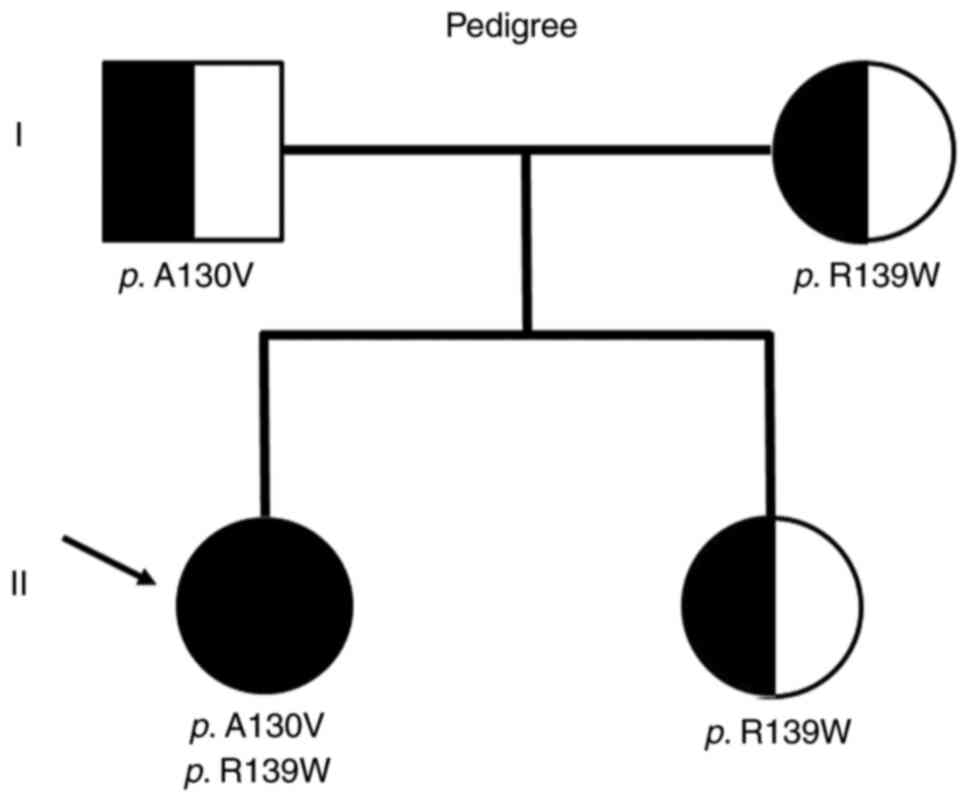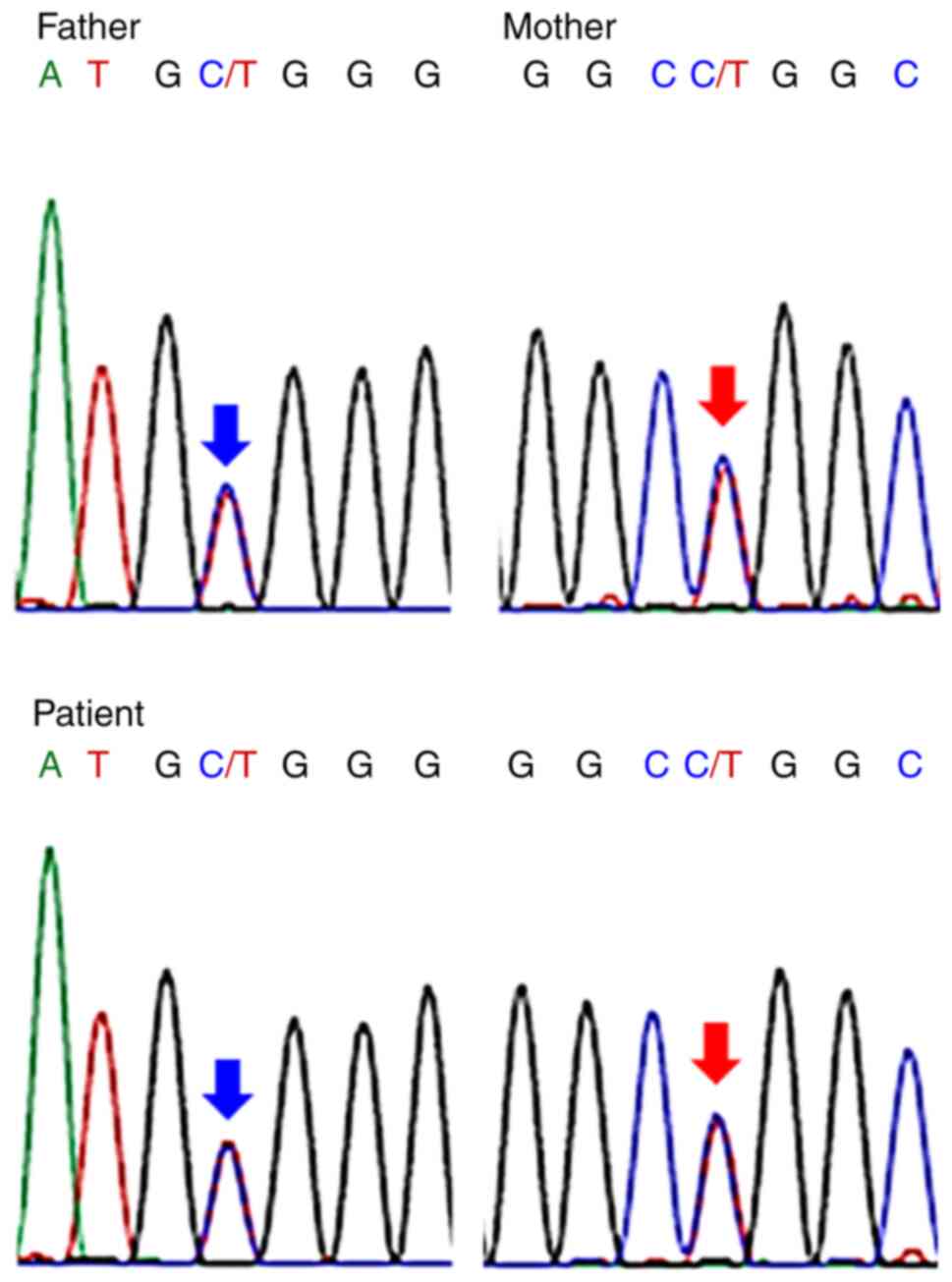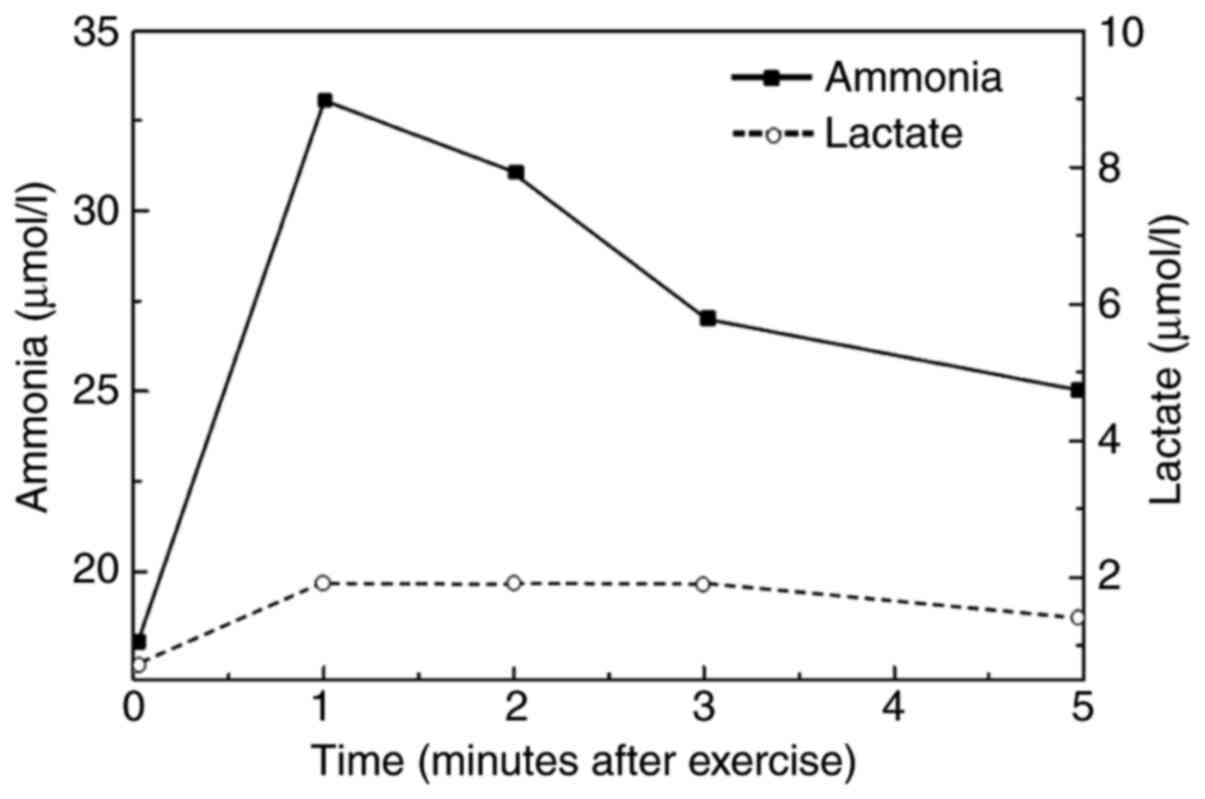|
1
|
Quinlivan R, Buckley J, James M, Twist A,
Ball S, Duno M, Vissing J, Bruno C, Cassandrini D, Roberts M, et
al: McArdle disease: A clinical review. J Neurol Neurosurg
Psychiatry. 81:1182–1188. 2010.PubMed/NCBI View Article : Google Scholar
|
|
2
|
Llavero F, Arrazola Sastre A, Luque
Montoro M, Gálvez P, Lacerda HM, Parada LA and Zugaza JL: McArdle
disease: New insights into its underlying molecular mechanisms. Int
J Mol Sci. 20(5919)2019.PubMed/NCBI View Article : Google Scholar
|
|
3
|
Lebo RV, Gorin F, Fletterick RJ, Kao FT,
Cheung MC, Bruce BD and Kan YW: High-resolution chromosome sorting
and DNA spot-blot analysis assign McArdle's syndrome to chromosome
11. Science. 225:57–59. 1984.PubMed/NCBI View Article : Google Scholar
|
|
4
|
Nogales-Gadea G, Santalla A, Brull A, de
Luna N, Lucia A and Pinós T: The pathogenomics of McArdle disease -
genes, enzymes, models, and therapeutic implications. J Inherit
Metab Dis. 38:221–230. 2015.PubMed/NCBI View Article : Google Scholar
|
|
5
|
Sugie H, Sugie Y, Ito M, Fukuda T, Nonaka
I and Igarashi Y: Genetic analysis of Japanese patients with
myophosphorylase deficiency (McArdle's disease): Single-codon
deletion in exon 17 is the predominant mutation. Clin Chim Acta.
236:81–86. 1995.PubMed/NCBI View Article : Google Scholar
|
|
6
|
Lucia A, Ruiz JR, Santalla A,
Nogales-Gadea G, Rubio JC, García-Consuegra I, Cabello A, Pérez M,
Teijeira S, Vieitez I, et al: Genotypic and phenotypic features of
McArdle disease: Insights from the Spanish national registry. J
Neurol Neurosurg Psychiatry. 83:322–328. 2012.PubMed/NCBI View Article : Google Scholar
|
|
7
|
Santalla A, Nogales-Gadea G, Encinar AB,
Vieitez I, González-Quintana A, Serrano-Lorenzo P, Consuegra IG,
Asensio S, Ballester-Lopez A, Pintos-Morell G, et al: Genotypic and
phenotypic features of all Spanish patients with McArdle disease: A
2016 update. BMC Genomics. 18 (Suppl 8)(819)2017.PubMed/NCBI View Article : Google Scholar
|
|
8
|
García-Consuegra I, Rubio JC,
Nogales-Gadea G, Bautista J, Jiménez S, Cabello A, Lucía A, Andreu
AL, Arenas J and Martin MA: Novel mutations in patients with
McArdle disease by analysis of skeletal muscle mRNA. J Med Genet.
46:198–202. 2009.PubMed/NCBI View Article : Google Scholar
|
|
9
|
Nogales-Gadea G, Brull A, Santalla A,
Andreu AL, Arenas J, Martín MA, Lucia A, de Luna N and Pinós T:
McArdle disease: Update of reported mutations and polymorphisms in
the PYGM Gene. Hum Mutat. 36:669–678. 2015.PubMed/NCBI View Article : Google Scholar
|
|
10
|
Aquaron R, Bergé-Lefranc JL, Pellissier
JF, Montfort MF, Mayan M, Figarella-Branger D, Coquet M, Serratrice
G and Pouget J: Molecular characterization of myophosphorylase
deficiency (McArdle disease) in 34 patients from Southern France:
Identification of 10 new mutations. Absence of genotype-phenotype
correlation. Neuromuscul Disord. 17:235–241. 2007.PubMed/NCBI View Article : Google Scholar
|
|
11
|
Burr ML, Roos JC and Ostör AJ: Metabolic
myopathies: A guide and update for clinicians. Curr Opin Rheumatol.
20:639–647. 2008.PubMed/NCBI View Article : Google Scholar
|
|
12
|
De Castro M, Johnston J and Biesecker L:
Determining the prevalence of McArdle disease from gene frequency
by analysis of next-generation sequencing data. Genet Med.
17:1002–1006. 2015.PubMed/NCBI View Article : Google Scholar
|
|
13
|
Yang Y, Muzny DM, Reid JG, Bainbridge MN,
Willis A, Ward PA, Braxton A, Beuten J, Xia F, Niu Z, et al:
Clinical whole-exome sequencing for the diagnosis of mendelian
disorders. N Engl J Med. 369:1502–1511. 2013.PubMed/NCBI View Article : Google Scholar
|
|
14
|
Kazemi-Esfarjani P, Skomorowska E, Jensen
TD, Haller RG and Vissing J: A nonischemic forearm exercise test
for McArdle disease. Ann Neurol. 52:153–159. 2002.PubMed/NCBI View Article : Google Scholar
|
|
15
|
Martín MA, Rubio JC, Wevers RA, Van
Engelen BG, Steenbergen GC, Van Diggelen OP, De Visser M, De
Die-Smulders C, Blázquez A, Andreu AL, et al: Molecular analysis of
myophosphorylase deficiency in Dutch patients with McArdle's
disease. Ann Hum Genet. 68:17–22. 2004.PubMed/NCBI View Article : Google Scholar
|
|
16
|
Tsujino S, Shanske S and DiMauro S:
Molecular genetic heterogeneity of myophosphorylase deficiency
(McArdle's disease). N Engl J Med. 329:241–245. 1993.PubMed/NCBI View Article : Google Scholar
|
|
17
|
Deschauer M, Morgenroth A, Joshi PR,
Gläser D, Chinnery PF, Aasly J, Schreiber H, Knape M, Zierz S and
Vorgerd M: Analysis of spectrum and frequencies of mutations in
McArdle disease. Identification of 13 novel mutations. J Neurol.
254:797–802. 2007.PubMed/NCBI View Article : Google Scholar
|
|
18
|
Martín MA, Rubio JC, Buchbinder J,
Fernández-Hojas R, del Hoyo P, Teijeira S, Gámez J, Navarro C,
Fernández JM, Cabello A, et al: Molecular heterogeneity of
myophosphorylase deficiency (McArdle's disease): A
genotype-phenotype correlation study. Ann Neurol. 50:574–581.
2001.PubMed/NCBI
|
|
19
|
Hogrel JY, van den Bogaart F, Ledoux I,
Ollivier G, Petit F, Koujah N, Béhin A, Stojkovic T, Eymard B,
Voermans N, et al: Diagnostic power of the non-ischaemic forearm
exercise test in detecting glycogenosis type V. Eur J Neurol.
22:933–940. 2015.PubMed/NCBI View Article : Google Scholar
|
|
20
|
de Luna N, Brull A, Lucia A, Santalla A,
Garatachea N, Martí R, Andreu AL and Pinós T: PYGM expression
analysis in white blood cells: A complementary tool for diagnosing
McArdle disease? Neuromuscul Disord. 24:1079–1086. 2014.PubMed/NCBI View Article : Google Scholar
|
|
21
|
Sinkeler SP, Daanen HA, Wevers RA, Oei TL,
Joosten EM and Binkhorst RA: The relation between blood lactate and
ammonia in ischemic handgrip exercise. Muscle Nerve. 8:523–527.
1985.PubMed/NCBI View Article : Google Scholar
|


















